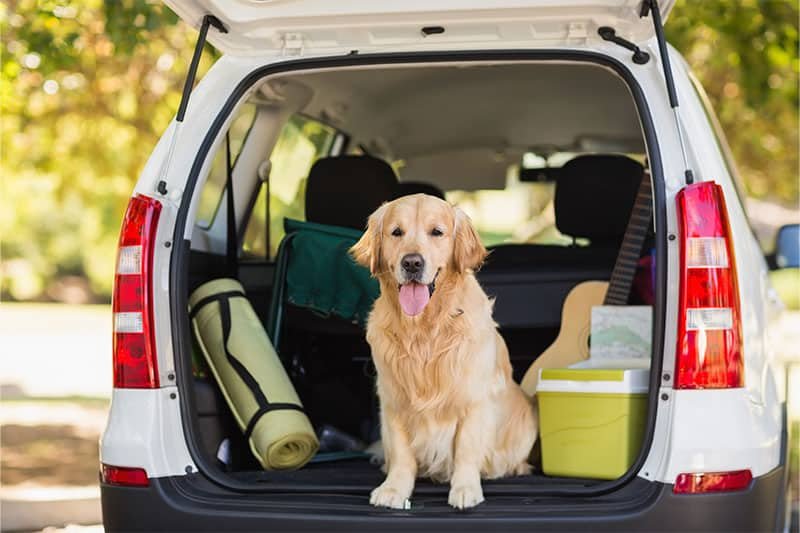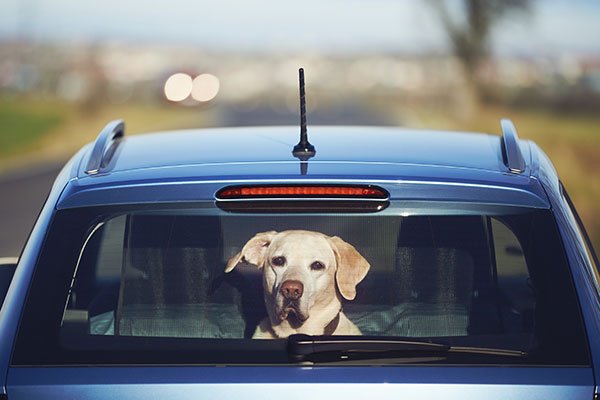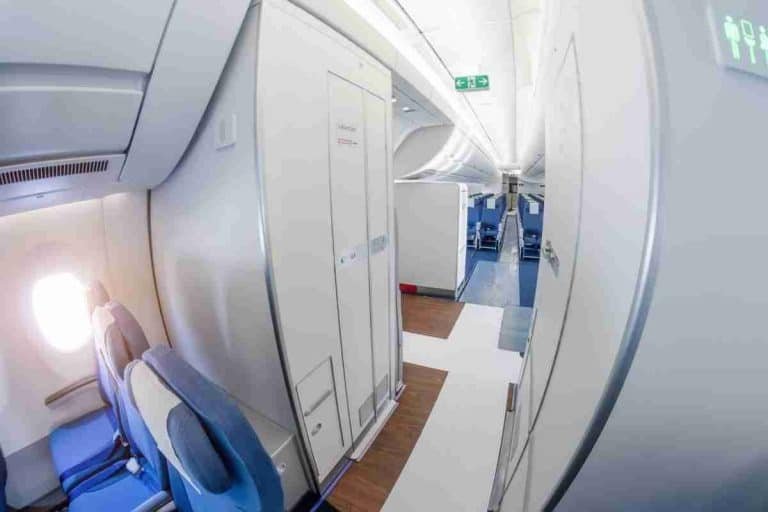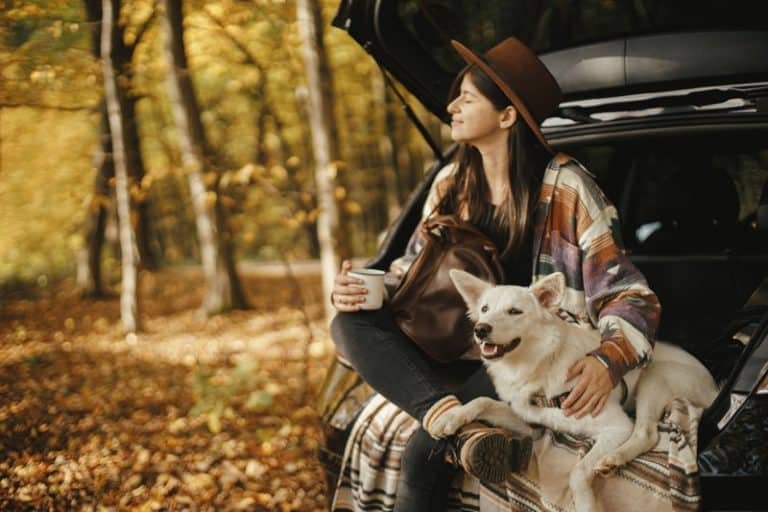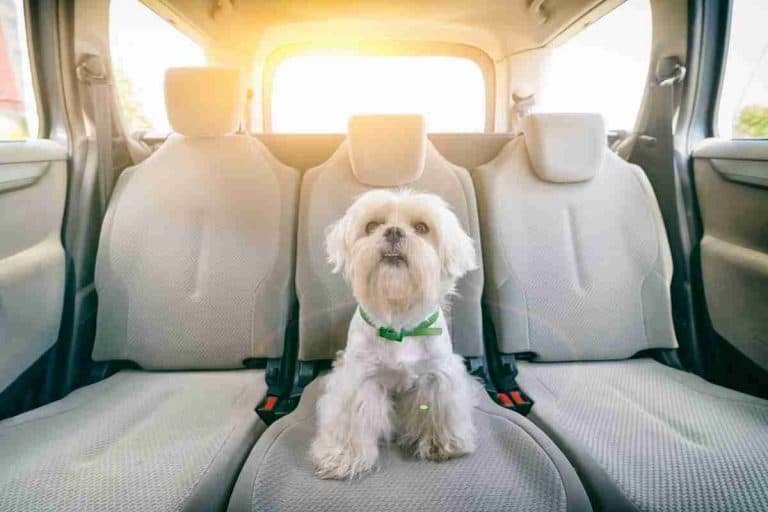Why Do Dogs Whine or Cry in the Car? 3 Main Reasons, Symptoms, and What To Do
Affiliate Disclaimer: As an affiliate, we may earn a small commission when you make a purchase from any of the links on this page at no additional cost to you!
Does your dog start whining in the car, or refuse to climb into it? This can be a stressful experience for both you and your dog, whether you’re on a road trip or taking a drive to the local park.
In this post, we will discuss the top 3 Reasons why your Dog is crying in the car, the symptoms, and what you can do to stop your dog from crying.
1. Your Dog has Motion Sickness
Motion sickness, or travel sickness, is more common in younger dogs than older dogs, since their sense of balance isn’t fully developed until the age of one.
Older dogs may show symptoms if they’re not used to the stimuli of traveling in a moving vehicle, and are likely to become nauseous.
Motion sickness is often confused with travel anxiety, however, both can be a result of the other.
4 Signs Your Dog Has Motion Sickness
- Whining or Pacing
- Excessive Drooling
- Lethargy or Inactivity
- Vomiting or Diaheria
How to Help Your Dog with Motion Sickness
Keep the Car Cool

Creating airflow in the car will help your dog breathe easier. By using the aircon or opening the windows, you can provide your dog with some cool air to help settle their nausea.
Create a Comfortable Resting Spot
It’s important for your dog to feel comfortable while they are on a trip. Use your dog’s blanket and pillows to create a ‘nest’ for your dog to rest comfortably when they are not occupied with looking out the windows.
A comfortable place to nap will help settle your dog on long trips.
Limit Food Intake Before the Trip
Limit food intake for approximately twelve hours before taking a trip. Dogs with motion sickness will need to stop frequently for bathroom breaks, especially since eating shortly before the trip may result in diarrhea, which can be inconvenient for longer trips.
If your dog gets diarrhea, provide fresh water frequently to keep them hydrated.
Start with Short Trips
If your dog isn’t used to traveling by car, they could experience motion sickness. Start by taking them for short trips such as to the local park and gradually increase the distance, allowing them to get used to the motion.
Stop Frequently on Long Trips
Taking small stops along the way will give your dog a quick bathroom break and a chance to breathe and stretch their legs. Use this time to give them water to refresh them before continuing your journey.
Give Them Their Favorite Toy or Blanket

Giving your dog a toy or blanket will provide them with easy comfort and distraction. Something familiar or fun can help keep them focused on something other than their nausea while not upsetting their stomachs.
Give them Medication
Local vets or pet shops provide stomach medication for dogs. If your dog has persistent stomach problems while traveling, this will help give them some relief.
Take Them to the Vet
If you think there might be a more significant underlying issue or if your dog hasn’t improved despite all the measures you have taken, you may want to take them to your local vet. The vet can provide medication and treatment to help your dog in future travels.
2. Frustrated by Small Spaces
Dogs are very active creatures. You may find your dog gets restless or excited in the car. They may start showing signs of frustration, especially if they find themselves on a long road trip with little time to run around and spend their energy.
Puppies may especially become bored due to the lack of activities. This can lead them to become irritated, needy, or even anxious, and can be annoying and even dangerous for you as the driver.
It may be difficult to find a way to keep you and your dog both safe and happy. Here are some signs that your dog is frustrated and a few tips to help them calm down.
9 Signs Your Dog is Frustrated
- Restlessness
- Panting
- Seeking Attention
- Snapping
- Impulsiveness
- Fidgety Behavior
- High Energy Levels
- Aggressive Behavior
- Digging
How to Help Your Dog with Frustration
Tire them Out First
Take your dog for a walk or play a game of fetch before the trip. Tiring them out will encourage them to relax and rest in the back, keeping them quiet for the ride.
Stay Calm
Dogs are very empathetic creatures. If they sense your own frustration this may encourage their own behavior. Remaining calm can help your dog feed off your emotions and calm down.
Play Calming Music
Studies show that dogs are sensitive to music. Try playing classical or other calming music to help your dog relax.
Start with Short Fun Trips
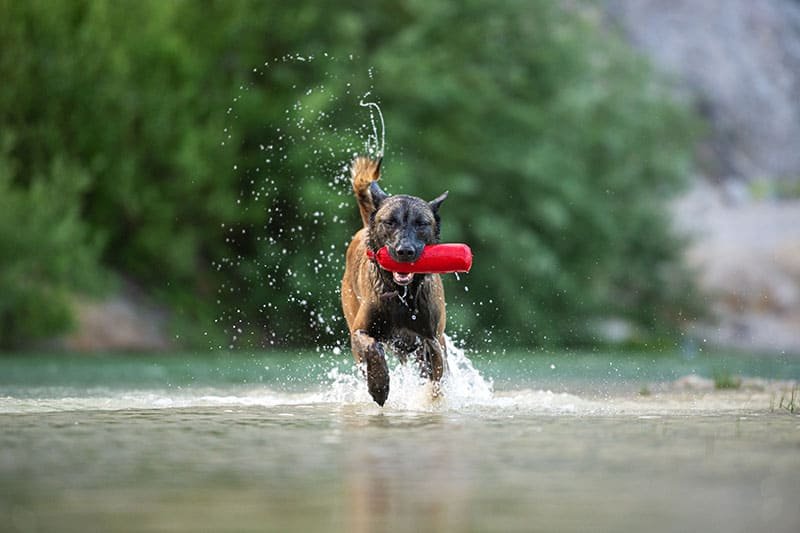
Taking smaller trips and slowly increasing them can help your dog grow in patience. When you travel try to pick out new or fun destinations for them, giving them something to expect or look forward to at the end of the trip such as the park or the beach.
Stop Frequently on Long Trips
When taking long trips, take short stops to help them spend their energy and get fresh air. They are likely to show less signs of frustration after they tire out.
Give Them Their Favorite Toy
Your dog may be bored and start demanding your attention and cuddles. While there’s nothing wrong with petting them now and then, this can become dangerous and distracting if your dog becomes too excited. Try giving them a toy or puzzle to keep themselves occupied, and keep them relaxed.
Reward Your Dog When They Stop Whining
Train your dog using words such as “No”, “Stop” or “Quiet”. Reward them when they stop whining with their favorite treat.
Do Not Start a Shouting Match
Sometimes it can be tempting to yell at your dog, especially when they’re whining for minutes on end. Shouting may encourage your dog to “argue” back. Speak calmly, but sternly with your dog to ensure they don’t become more stressed or irritated.
3. Suffering from Anxiety
Your dog may experience anxiety for a number of reasons. It may be that they are stressed by an unfamiliar situation, environment, or stimuli from the car’s movement. It can also be a result of motion sickness or frustration.
It’s important to help them overcome this as soon as possible, as their fear may grow more complex over time left untreated.
7 Signs Your Dog has Car Anxiety
- Reluctant to Get into Car
- Panting, Whining, or Barking
- Drooling Excessively
- Yawning
- Pacing and Restlessness
- Lip Smacking or Frequent Lip Licking
- Shaking or Trembling
How to Help Your Dog With Anxiety
Put Your Dog in a Crate or Safety Belt
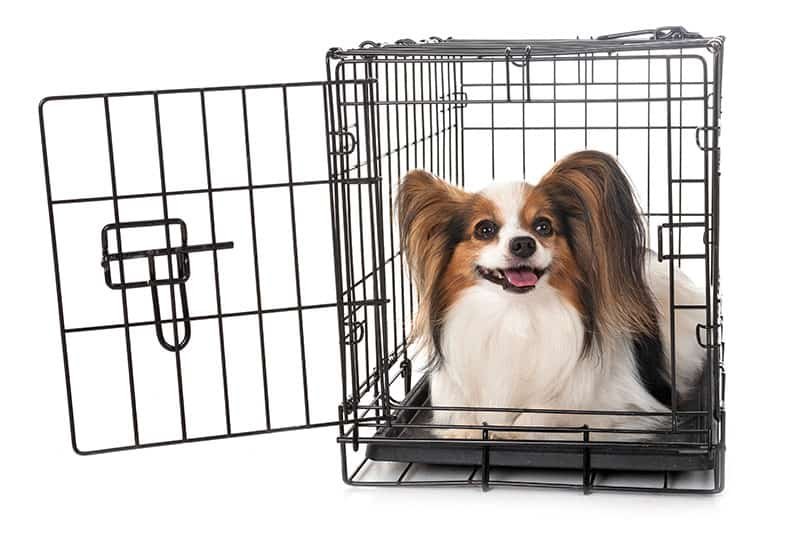
Putting your dog in a crate or safety belt will give your dog a sense of security. Your dog may be afraid of the movement and momentum created by the car, especially on uneven roads and sharp corners. Be sure to be aware of how you’re driving so as to not jostle them about too much as that could increase their fear.
Stay Calm
By staying calm and relaxed your dog may sense your ease and begin to relax. Showing signs of stress or frustration could increase their anxiety.
Play Calming Music
Create a peaceful environment by playing calm music. Studies show dogs find classical music relaxing, so try playing some to help them destress.
Start with Short Trips
Start with short trips around the block and then gradually increase the distance to a nearby park or beach. Your dog will slowly grow accustomed to your car making trips easier.
Take Them For Rides Often
Taking them out often and consistently will ensure they grow accustomed quickly. Only taking them once or twice a year to see a vet may leave a negative or unfamiliar feeling when told to hop in the vehicle
Give Them Their Favorite Toy or Blanket

Give your dog a distraction by giving them their favorite comfort toy or blanket. Giving them something like an old shirt that is covered in your scent may also calm them down.
Take Them to the Vet
If you have tried all these tips and your dog doesn’t improve, you may want to consider taking them to your local vet. There may be a greater underlying issue that is causing your dog to experience anxiety.
Frequently Asked Questions
Should I Ignore My Dog?
If your dog is suffering from motion sickness, frustration, or anxiety it’s best to pay attention. However, if you believe your dog is simply whining for attention or for no other apparent reason it may be best to ignore them.
Give them a “quiet” command, and if they persist, ignore them for a few minutes before repeating or until they quiet down. If you have been rewarding them for quieting down only for them to start again later it may be that they’re trying to get treats.
What Dog Breeds Whine a Lot?
Dogs such as hounds, herding dogs, and toy breeds have a tendency to whine a lot. Hounds such as dachshunds and bloodhounds whine when hunting and tracking prey. Herding dogs such as border collies and german shepherds whine to communicate with each other as well as their owners. Toy breeds such as chihuahuas and Maltese poodles are more likely to whine in excitement, frustration, or fear.
When to Consult a Vet
Consult a vet when your dog starts drooling too much or vomiting, or if their symptoms don’t improve in spite of following the tips given in this post. Your vet may prescribe anti-nausea medicine or medication to help with anxiety.
They may also provide training techniques as well as a unique treatment program for your individual dog’s needs.
Conclusion
Helping your dog overcome their unique struggles in traveling by car will require patience and understanding. Take things slowly and carefully. The road may be long but the outcome will be rewarding for both you and your dog. And you can look forward to a future of fun, relaxing drives and road trips with your most loyal companion.

